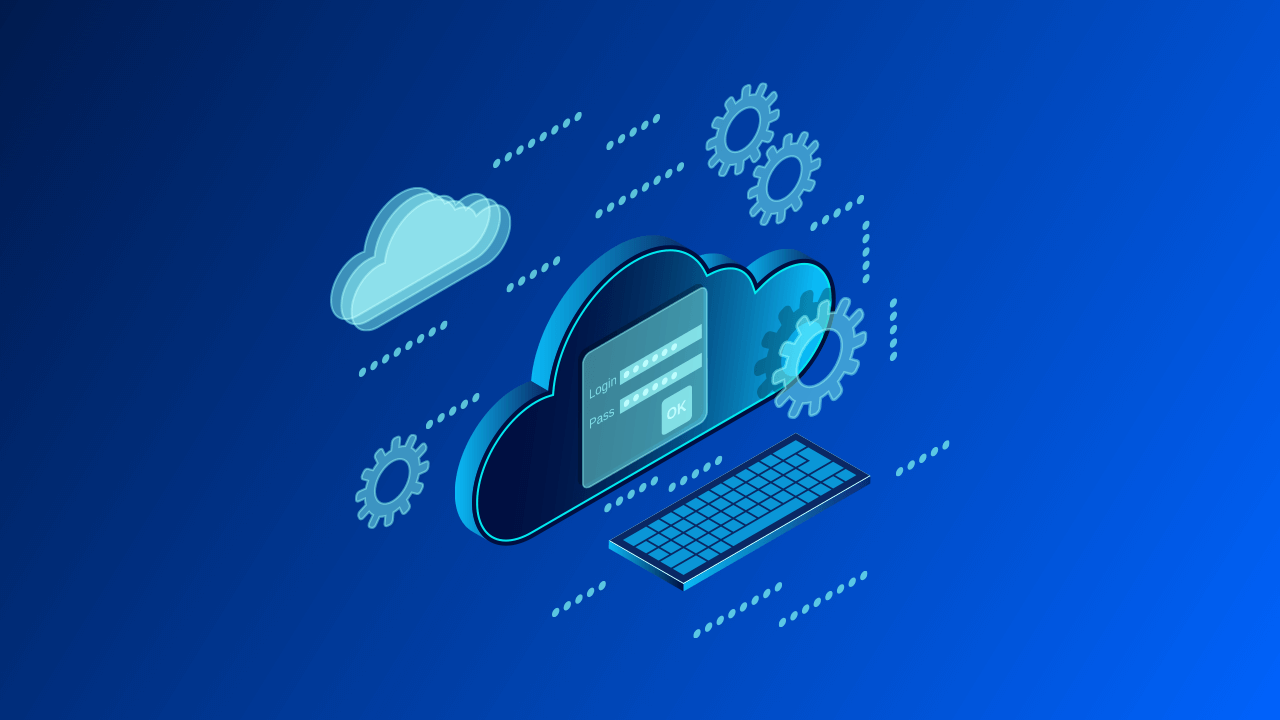How Does Cloud Computing Impact Data Security and Privacy?

Cloud computing has revolutionized the way businesses, individuals, and organizations access and manage data. The flexibility, scalability, and cost-efficiency of cloud solutions make them an attractive option for many sectors, including finance, healthcare, retail, and education. However, as organizations increasingly rely on cloud computing to store and manage sensitive information, data security and privacy concerns have become significant. Understanding how cloud computing impacts data security and privacy is critical for businesses that wish to protect their valuable data from breaches and cyber threats.
This article delves into how cloud computing affects data security and privacy, exploring the advantages, risks, best practices, and challenges associated with cloud adoption. Additionally, we will provide insights into the regulatory frameworks governing cloud security and offer practical advice on maintaining robust data privacy standards.
1. Understanding Cloud Computing and Data Security
Cloud computing involves the delivery of computing services, such as storage, processing power, networking, and software, over the internet. Instead of relying on traditional on-premises infrastructure, organizations can access these services remotely through third-party cloud service providers (CSPs). Cloud computing services are typically categorized into three primary models:
- Infrastructure as a Service (IaaS): Provides virtualized computing resources, such as storage and networking.
- Platform as a Service (PaaS): Offers a platform allowing customers to develop, run, and manage applications without dealing with infrastructure management.
- Software as a Service (SaaS): Provides cloud-based software applications over the internet, such as email, CRM, and office suites.
Data security refers to the protection of data from unauthorized access, corruption, or loss, while data privacy focuses on the proper handling, processing, and storage of personal information in compliance with legal and ethical standards.
With cloud computing, businesses can benefit from increased flexibility, reduced operational costs, and streamlined operations. However, these benefits must be weighed against the potential risks to data security and privacy.
2. How Cloud Computing Enhances Data Security
While cloud computing presents various security risks, it can also offer substantial improvements over traditional IT infrastructure when it comes to data protection. Here are some ways cloud computing enhances data security:
A. Advanced Encryption
Cloud service providers typically implement strong encryption protocols, both during data transmission and storage, to safeguard sensitive data. This helps prevent unauthorized access, even if data is intercepted during transmission or if there is a breach of a data center. With cloud-based encryption, organizations can ensure that their data remains secure, irrespective of where it is located.
- Data at Rest: Cloud providers encrypt data stored on their servers to protect it from potential breaches.
- Data in Transit: Data is encrypted as it moves from one location to another, preventing unauthorized access or tampering.
B. Multi-Factor Authentication (MFA)
MFA adds an additional layer of security to the cloud environment by requiring users to verify their identity through multiple methods, such as a password and a biometric scan or a one-time code sent to their phone. This reduces the likelihood of unauthorized access to sensitive data, even if a password is compromised.
C. Regular Security Updates and Patching
Cloud providers take responsibility for ensuring that their platforms are secure and up-to-date with the latest security patches. This is particularly advantageous for organizations that lack the resources or expertise to manage their own IT infrastructure and apply security updates. By using a cloud service, businesses can take advantage of the provider’s security team to mitigate vulnerabilities and stay ahead of potential threats.
D. Security Monitoring and Threat Detection
Cloud providers often offer robust security monitoring tools to help businesses detect and respond to threats in real-time. These monitoring tools can detect unusual activity or potential security breaches and immediately alert the organization. In addition, some providers offer advanced machine learning and AI-powered systems to detect and predict emerging threats, enhancing proactive security.
E. Distributed Denial-of-Service (DDoS) Protection
One of the key concerns for cloud environments is the risk of DDoS attacks, which can overwhelm cloud infrastructure with traffic and make services inaccessible. Many cloud providers implement built-in DDoS protection mechanisms that detect and mitigate such attacks, ensuring minimal downtime and enhanced security.
3. Data Privacy Challenges in Cloud Computing
While cloud computing offers advanced security measures, there are certain data privacy challenges that need to be addressed. Data privacy refers to the protection of personal and sensitive information, ensuring it is handled in accordance with legal and ethical standards. These challenges include:
A. Data Sovereignty and Jurisdiction
One of the primary concerns regarding data privacy in cloud computing is data sovereignty. Cloud providers often operate data centers in multiple countries, and the location of data storage can affect how that data is governed legally. Different countries have different privacy laws and regulations, which can create confusion about how data is protected across borders.
- GDPR Compliance: The General Data Protection Regulation (GDPR) in Europe, for example, imposes strict data protection requirements on companies that handle personal data of EU citizens. Organizations must ensure that their cloud providers comply with GDPR standards to avoid fines and penalties.
- Data Residency: Some businesses may need to ensure that their data is stored within specific geographic regions to comply with local data residency laws. This can limit the selection of cloud providers, depending on their data center locations.
B. Lack of Visibility and Control
In traditional on-premises infrastructure, organizations have full control over how data is stored and accessed. However, in a cloud environment, organizations often rely on cloud service providers to manage their data security and privacy. This creates a lack of visibility into the underlying infrastructure, which can make it difficult for businesses to fully assess and control data privacy risks.
C. Shared Responsibility Model
Cloud providers operate under a shared responsibility model, meaning that both the provider and the customer share the responsibility for securing the data. While the cloud provider is responsible for securing the cloud infrastructure, the customer must ensure the security and privacy of their data, including configuring security settings, setting permissions, and managing access controls.
- Cloud Provider Responsibilities: Security of the physical infrastructure, network, and basic platform security.
- Customer Responsibilities: Data encryption, user access management, and ensuring proper configurations.
This division of responsibilities can sometimes lead to misunderstandings, leaving gaps in security and privacy if the customer neglects their obligations.
D. Insider Threats
Although cloud providers implement robust security measures, there is still a risk of insider threats. Cloud environments, being managed by third-party vendors, increase the risk that malicious or negligent employees could compromise data. While this risk exists in any organization, cloud environments may be more vulnerable due to the level of access that cloud service providers have to the data stored on their platforms.
4. Best Practices for Enhancing Cloud Security and Privacy
Organizations can take several steps to mitigate the risks and enhance data security and privacy in a cloud environment:
A. Choose a Trusted Cloud Service Provider
When selecting a cloud provider, businesses should prioritize providers with strong security measures, including data encryption, compliance with industry regulations, and a proven track record of handling sensitive data. It’s essential to understand the security features and certifications offered by the cloud provider.
B. Implement Strong Access Control
Access control is essential for maintaining data security and privacy. Businesses should implement role-based access controls (RBAC) and the principle of least privilege to restrict access to sensitive data only to authorized individuals. Additionally, combining strong passwords with multi-factor authentication (MFA) will further reduce the risk of unauthorized access.
C. Encrypt Data and Use Secure Connections
Data should be encrypted both in transit and at rest. Organizations should also use secure communication channels, such as SSL/TLS, to protect data during transmission. Regularly reviewing encryption practices is essential to ensure compliance with the latest standards.
D. Regularly Back Up Data
Cloud computing can make data storage and management more accessible, but organizations should still regularly back up data. This ensures that in case of a security breach or data loss, they can restore critical information from backups.
E. Stay Compliant with Data Privacy Regulations
Organizations must ensure their cloud service providers comply with data protection laws such as GDPR, HIPAA, and others. It’s important to regularly audit cloud systems and ensure that they meet regulatory standards for privacy and security.
F. Monitor and Respond to Security Threats
Proactive monitoring of cloud environments for potential security threats is essential. Organizations should use advanced threat detection systems, conduct regular vulnerability assessments, and have a response plan in place in case of a security breach.
FAQs
- What are the primary security risks associated with cloud computing? The main security risks include data breaches, loss of control over data, lack of visibility into cloud operations, and potential insider threats.
- How can I protect my data in the cloud? You can protect your data by implementing encryption, strong access controls, multi-factor authentication, and regular backups.
- What is the shared responsibility model in cloud computing? The shared responsibility model divides security responsibilities between the cloud provider (responsible for the infrastructure) and the customer (responsible for managing data security and privacy).
- How does cloud computing help with compliance? Cloud providers offer services that help businesses comply with data privacy laws like GDPR and HIPAA, including encryption, data access controls, and secure storage.
- Can cloud providers access my data? While cloud providers have access to the infrastructure, access to your data is typically restricted. However, this depends on the level of service and specific provider agreements.
- What is the role of encryption in cloud security? Encryption ensures that even if data is intercepted or accessed without authorization, it remains unreadable without the decryption key.
- How can cloud computing impact an organization’s data sovereignty? Cloud computing can create challenges with data sovereignty due to the physical location of data centers and the varying data protection laws in different countries.
Conclusion
Cloud computing provides many advantages, including cost savings, flexibility, and scalability. However, businesses must carefully manage data security and privacy to ensure the protection of sensitive information. While cloud providers offer robust security measures, organizations must also implement best practices such as encryption, access control, and regular monitoring to safeguard their data. Understanding the shared responsibility model, complying with data privacy regulations, and selecting a trusted cloud provider are essential for maintaining secure and private data in the cloud.
Key Takeaways
- Cloud Security Advantages: Cloud computing offers encryption, multi-factor authentication, and DDoS protection to enhance data security.
- Data Privacy Concerns: Data sovereignty and lack of visibility into cloud operations pose challenges to data privacy.
- Shared Responsibility Model: Both the cloud provider and the customer share responsibility for data security and privacy.
- Best Practices: Encrypt data, implement strong access controls, regularly back up data, and stay compliant with regulations.
- Risk Mitigation: Regular monitoring and threat detection are essential for identifying and addressing security vulnerabilities in cloud environments.




Leave a Comment